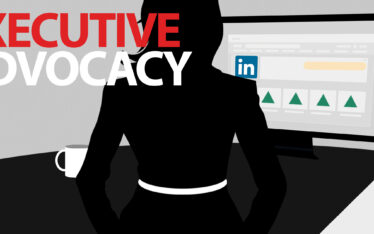
Your brand’s reputation is being decided by your customers, and their impressions are made up of everything they see and hear, from the 5-star reviews on Yelp! to the way you responded to that poor review on Google. Your audience is watching how you interact with followers on Facebook, what content you share on Instagram and how quickly you respond to a question or complaint on Twitter.
Modern brands are charged with maintaining a store front and/or a website, multiple social profiles and hundreds of customer reviews across Google, Yelp! and more. Reputation management is critical to your reputation and your bottom line. It ensures your brand speaks with one voice across every channel and provides your customers with an exceptional experience every time they interact with your business. Want your brand to be a legitimate competitor in 2020? Reputation management is table stakes. Follow these five steps to improve your brand reputation.
Reputation Management Step #1
If you don’t already have a Google My Business page, this is an ideal place to start. It’s a free business profile that allows you to connect with customers across Google Search and Maps. If you’re a retail store or a restaurant you should also set up Yelp! and TripAdvisor accounts. And if you are in the business of needing to hire and retain top talent, your brand should also have a Glassdoor profile so that you can build your reputation as a desirable employer, as well.
Reputation Management Step #2
Create an email campaign to start pulling in positive reviews. If your business isn’t currently getting reviews, you’re missing out on potential new business. A review campaign can help you earn reviews from customers who make a purchase from you. The odds are in your favor: 68% of consumers will leave a review if asked.
Reputation Management Step #3
Monitor any sites where your customers might leave a review of your company. A platform such as Sprout Social not only helps you keep track of all of your social media profiles, but it can also monitor Google, Facebook, Yelp! and Trip Advisor so that you can quickly and professionally respond to each review from a single dashboard. If you’re short on resources, we can help. Want choices? Here’s a listing of every Sprout Social Partner Agency.
Reputation Management Step #4
Responding to reviews is a key component, not only of brand management, but of your overall marketing strategy. It’s no longer optional, but mission-critical. Why? Two reasons. No. 1: Revenue potential is higher for companies that respond to all reviews. Online reviews impact purchasing decisions for over 93% of consumers and they’re willing to spend 31% more on a business with excellent reviews. And the potential doesn’t apply only to consumer brands: 92% of B2B buyers are more likely to purchase after reading a trusted review, as well. No. 2: Consumer trust is higher among brands that respond to reviews. 78% of consumers say that seeing management respond to online reviews makes them believe that the business cares more about them. When customers hear back, perceptions immediately improve. In fact, 80% of consumers believe that a business cares more about them when its management responds to their reviews.
Reputation Management Step #5
Check in each month to see how well you’re doing. Is your email campaign helping you garner more reviews? What is your average review rating? Do reviewers upgrade a poor rating after you respond to their negative review? By how much? If your responses aren’t making a difference, you might need help crafting a proper response. Over time, are you seeing a pattern that impacts your bottom line?
Despite the mounting evidence in favor of responding to reviews, more than 60% of consumers say that a business has never responded to their review. Clearly, there’s much room for improvement.
If 2020 is the year you’re going to get serious about reviews (and it absolutely should be), here are 4 key tips to keep in mind.
Review Tip #1 Respond quickly.
Timing really is everything when it comes to reviews. 53% of customers expect to hear back from brands within seven days of posting an online review, particularly one that’s negative or critical. 25% are more demanding, expecting a review response within three days, while 21% expect brands to have a response time of 24 hours or less.
Review Tip #2 It’s all or nothing.
Responding to every review – good or bad – is important. Great reviews deserve more than a simple “thank you.” Take the time to craft a thoughtful, professional response. And if the review is less than stellar, your response should be even more so. Bryan Caplan is a speaker for Grow with Google. In his presentations, he frequently hears from business owners who’ve been the “victim” of a negative review from “awful customers who don’t know what they’re talking about.” Here’s the thing, though. Your response to that review is your opportunity to show your character. Speaking of negative reviews… According to a recent study by Bazaarvoice, 7 out of 10 respondents said their opinion was changed after a business responded to a review. So go ahead and…
Review Tip #3 Write your response, but don’t publish it… yet.
There’s no question that responding to negative reviews is a must: nearly half of consumers say they’re more likely to visit a business if it responds to negative reviews. But be thoughtful about your responses. Don’t make excuses, and don’t talk down to the customer, regardless of what they said. Consumers are more curious than ever to learn what could go wrong when visiting a business. In fact, more people are looking at 1-star reviews, and a greater percentage of consumers say that 1-star reviews are the most trustworthy. Nine out of 10 people look at poor reviews to see how the company handles the feedback. That’s how they decide if they want to make a purchase. It’s more important than ever to respond to each review in a way that both respects the reviewer and shows your brand’s character.
Review Tip #4 Perfection isn’t all it’s cracked up to be.
It’d be nice to have hundreds of glowing, 5-star reviews with nary a negative word in sight. But, let’s be real: you can’t please all the people all the time. If you’ve been in business for any length of time, you’ve likely earned at least one less-than-stellar review from an unsatisfied customer. But here’s where the stats get interesting. Did you know that 40% of shoppers say negative reviews build credibility for a product or service? In fact 95% of consumers assume a brand is posting fake reviews if there isn’t a single bad score. Earning, tracking, and responding to every customer review can help your business drive revenue and build a stronger reputation among your target audience.
Short on resources? Learn more about our reputation management services and how they can help you grow your business and your bottom line.


